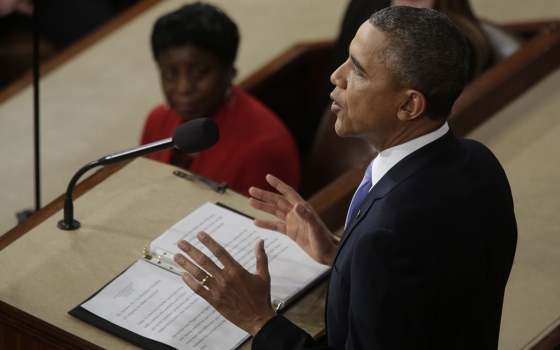- MENU
- HOME
- SEARCH
- WORLD
- MAIN
- AFRICA
- ASIA
- BALKANS
- EUROPE
- LATIN AMERICA
- MIDDLE EAST
- United Kingdom
- United States
- Argentina
- Australia
- Austria
- Benelux
- Brazil
- Canada
- China
- France
- Germany
- Greece
- Hungary
- India
- Indonesia
- Ireland
- Israel
- Italy
- Japan
- Korea
- Mexico
- New Zealand
- Pakistan
- Philippines
- Poland
- Russia
- South Africa
- Spain
- Taiwan
- Turkey
- USA
- BUSINESS
- WEALTH
- STOCKS
- TECH
- HEALTH
- LIFESTYLE
- ENTERTAINMENT
- SPORTS
- RSS
- iHaveNet.com

The Curse of the Two-Term Limit
by Jules Witcover
As Barack Obama struggles to gain political traction as a lame-duck president in his remaining three years in office, the two-term limit on service in the Oval Office has encouraged a premature public focus on the identity of his successor in 2017.
Beyond a growing sense that Obama's momentum has been stalled by the Obamacare troubles, the early attention being afforded to the expectation that Hillary Clinton will seek the next Democratic nomination has intruded on the president's efforts to remain relevant.
At the same time, the prospect that she could be the 2016 Democratic nominee has contributed to the interest within the
As for Obama, his continuing difficulties with
His dilemma could be called the curse of the two-term limit, the original standard set by George Washington when he declined in 1796 to seek a third term that almost certainly would have been his, had he chosen to seek it.
The two men most prominently positioned to succeed him, his Federalist vice president John Adams and Anti-Federalist Thomas Jefferson, silently and respectfully awaited his decision to retire before acceding to supporters' efforts in their behalf. But later, in 1807, Jefferson was recorded as saying without a two-term limit, a president could hold the job "for life."
Some two-term presidents thereafter, such as Theodore Roosevelt, did seek a third term. After reaching the presidency upon the assassination of President William McKinley in 1901 and being re-elected in 1904, TR tried, but not consecutively.
On the night of his re-election, he jolted the country by declaring: "The wise custom which limits the President to two terms regards the substance and not the form, and under no circumstances will I be a candidate for or accept another nomination." Roosevelt was only 46 years old at the time. But in 1912 he changed his mind and tried again, running as a third-party nominee, and lost to Democrat Woodrow Wilson.
The two-term limit was imposed by the 22nd Amendment to the Constitution, passed by
It provides that "no person shall be elected to the office of President more than twice, and no person who has held the office of President, or has acted as President, for more than two years of a term to which some other person was elected President shall be elected to the office of President more than once."
President Harry Truman, who served more than three years of FDR's fourth term and was elected in his own right in 1948, ordinarily would not have been eligible to run again in 1952, the year after the amendment's ratification. But the amendment explicitly excluded him as serving at the time.
The two-term limit, embraced by the
The limit of two presidential terms thus obliges President Obama, thwarted in his first five years in office, to depend heavily on acquiring a much more cooperative
Receive our political analysis by email by subscribing here
AMERICAN POLITICS
WORLD | AFRICA | ASIA | EUROPE | LATIN AMERICA | MIDDLE EAST | UNITED STATES | ECONOMICS | EDUCATION | ENVIRONMENT | FOREIGN POLICY | POLITICS
Article: Copyright ©, Tribune Content Agency.
The Curse of the Two-Term Limit